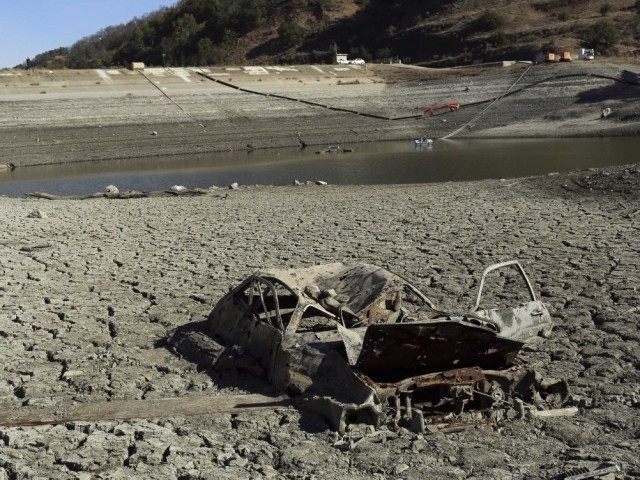California’s December rainstorms are long forgotten.
Two separate federal agencies predicted this weekend that the three-year-old drought plaguing the Golden State will continue, at least across most of the state.
The National Oceanic and Atmospheric Administration predicts that while Southern California could see some relief, the drought will likely persist, or even intensify, in the central and northern parts of the state.
Meanwhile, the U.S. Department of Agriculture’s National Water and Climate Center forecasted that while water supplies are expected to be at normal levels this winter in much of the West, the current snowpack in the Sierra Nevada mountains “is far below normal.” The snowpack is a critical source of water for California during what is supposed to be the state’s “dry season.”
After a particularly wet December, January has been completely dry in most of the Golden State, according to the Contra Costa Times. While the federal predictions sound dire for central and northern Californians already struggling with the drought’s effects, some weather experts say it is too early to tell whether the state will experience a fourth full year of drought.
“A midwinter dry spell occurs almost every winter, and it averages 19 days,” meteorologist Jan Null told the Times. “Now if it persists on to February and March, then we’re getting out of the normal realm.”
But farmers like Pete Aiello, of Uesugi Farms in Gilroy, are wary.
“Mother Nature supplied plenty of irrigation that month,” Aiello told the Times of the fact that he did not need to water his strawberries once in December.”I don’t remember the last time we got through January without a drop. We usually get a little rain.”>
Water agencies are waiting to see whether a wet February or March will make up for the dryness of January. In December, the city of Santa Cruz ended a mandatory water-rationing program when its main reservoir hit 62 percent capacity. However Santa Cruz Water Department spokesman Eileen Cross told the Times that the city could reinstate the measure if it doesn’t begin raining again.
The East Bay Municipal Utility District is similarly reminding customers not to “let off the gas on conservation efforts.”
“December was wet. January is dry. And the rest of the season, we just have no idea,” EBMUD spokeswoman Andrea Pook told the paper. “It could really go either way. It’s just all a matter of where your water comes from, and a storm could come along and just barely miss you. It’s confusing for customers.”
National Water and Climate Center hydrologist Cara McCarthy concedes that long-term forecasts are not always accurate, and that the predictions made by the federal agencies could fail to come to fruition.
“This is just the first forecast of the season; everything can change,” McCarthy said in a statement. “A weak El Niño is forecast for this year, which might play a part in coming months.”
While both forecasts do indeed predict a weak El Niño pattern forming over the next few months, it likely won’t affect the region’s drought outlook. The pattern would mostly bring rainfall to the southwest while leaving the Pacific Northwest dry.
While farmers, meteorologists, and water agencies plot, worry, and react to the prospect of more drought, at least one business owner is still smiling in sunny January.
“The golf courses look outstanding,” course manager Bob Costa told the Times, saying he did not need to turn on the sprinklers this year to keep the greens green. “Great color and firm ground.”

COMMENTS
Please let us know if you're having issues with commenting.